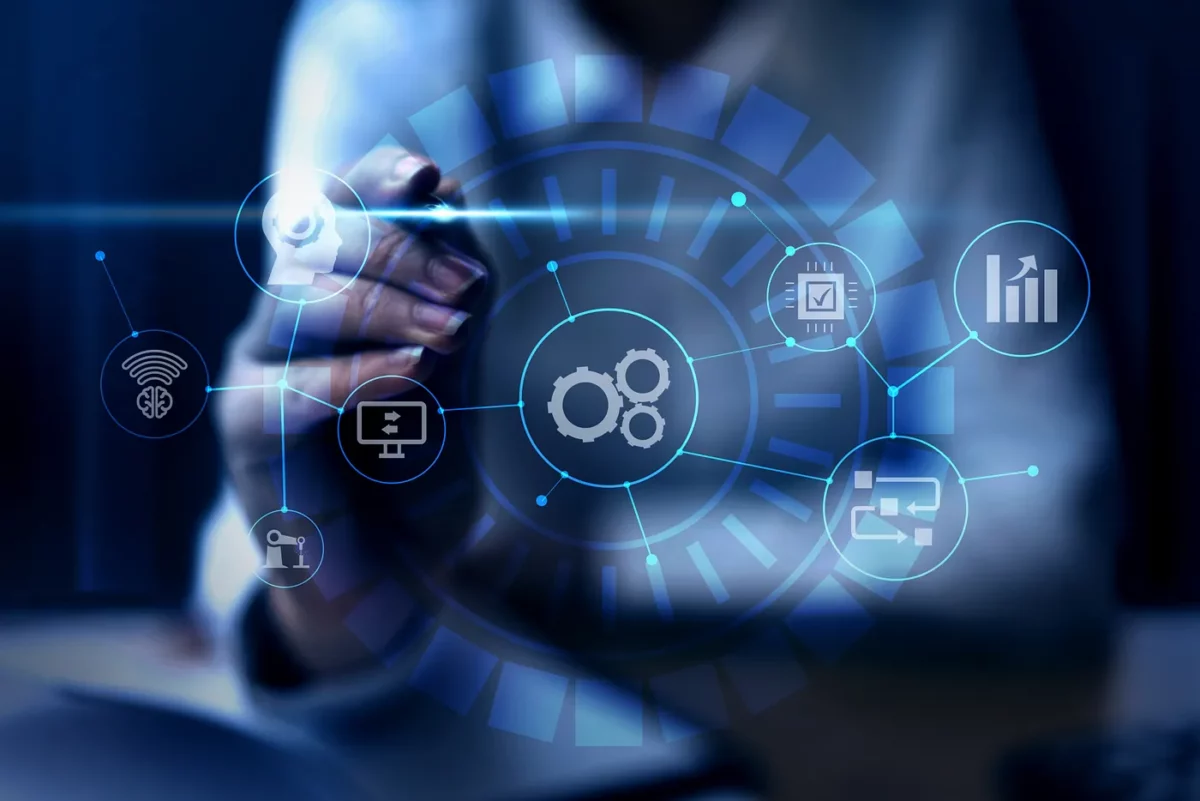Most industries today are predominantly automated, and a significant portion of the industrial elite had already started in many sectors like smart manufacturing, self-retailing, or digital healthcare. The adoption of emerging Intelligent technologies for the manufacturing sector has a greater emphasis on pushing toward industrial automation. The evolution of Industry 4.0 in manufacturing connects new technology and established trends in automation and data exchange. This is possible because of the assistance provided by intelligent machines that have access to more data, where industries will be more productive, efficient, and reduced costs.
Now, let’s take a deep dive into the top 5 technologies that help in industrial automation:
1. Artificial Intelligence (AI) & Machine learning (ML)
2. Computer Vision (CV)
3. Augmented Reality (AR)
4. Natural Language Processing (NLP)
5. Optical Character Recognition (OCR)
1. Artificial Intelligence & Machine Learning
Artificial intelligence and machine learning are perhaps the two most significant technologies that come to mind when thinking about intelligent automation AI & ML mimics how people learn by using digital data together with other components like remote inputs and algorithms. Most often, predictions are made using AI and machine learning based on analysis of historical data and past behaviors. Industrial supply chains can be optimized using AI algorithms to assist organizations in anticipating market changes. The major advantages of artificial intelligence are those related to learning and decision-making.
2. Computer Vision (CV)
The ability of computers and entire systems to glean valuable and pertinent information from digital sources is thought to be the focus of the field of computer vision. These digital sources can include different visual inputs including photographs, videos, and other visual media. On the basis of the information that has been retrieved, recommendations can be made for both more activities and broad assumptions or conclusions. Computer vision is crucial for comprehending and interpreting the visual environment as well as enabling machine interpretation in this sense. Software-based data capture tools work on computer vision algorithm that helps in accurate data capture with real-time insights.
3. Augmented Reality
Augmented reality (AR) technology overlays an image on a user’s perception of the real-time world. It combines a computer-generated virtual scene with the actual scene of the viewer. Augmented reality is a rapidly developing technology that has the potential to address significant operational issues in the industrial sectors. Workers who use AR solutions in production do action more quickly. Field service technicians and remote specialists can communicate with each other in two directions using AR solutions. This technology has the ability to disrupt the manufacturing sector and make it more adaptable, efficient, and customer-focused.
4. Natural Language Processing (NLP)
Natural language processing also called NLP, is a subfield of artificial intelligence. NLP focuses on how computers and humans interact and relate to one another. This technology recognizes the important components of human instructions, extracts pertinent information, and then processes the information to allow robots to understand it. The adoption of NLP in the manufacturing process reduces repetitive tasks, ensures smooth automation without any interruption, and frees up workers from activities that call for human skill sets.
5. Optical Character Recognition (OCR)
Optical character recognition also known as text recognition is a process that converts handwritten or printed text images into machine-encoded text. In manufacturing industries, the batch ID, lot code, and expiration date are crucial data to be collected. Workers rely on manually entering each entry individually which requires a lot of time and work. The use of OCR technology could reduce the effort by extracting the data from the text, which can be stored in a smart database.
In order to gain a competitive advantage, industries require early adoption of new prospects and developing technologies into their workflows. Industries like manufacturing, healthcare, energy, and finance are gaining benefits from technological advancements like Artificial intelligence, virtual reality, process intelligence tools, and 3D visualization. This increases success rates through a more efficient and productive work environment.


